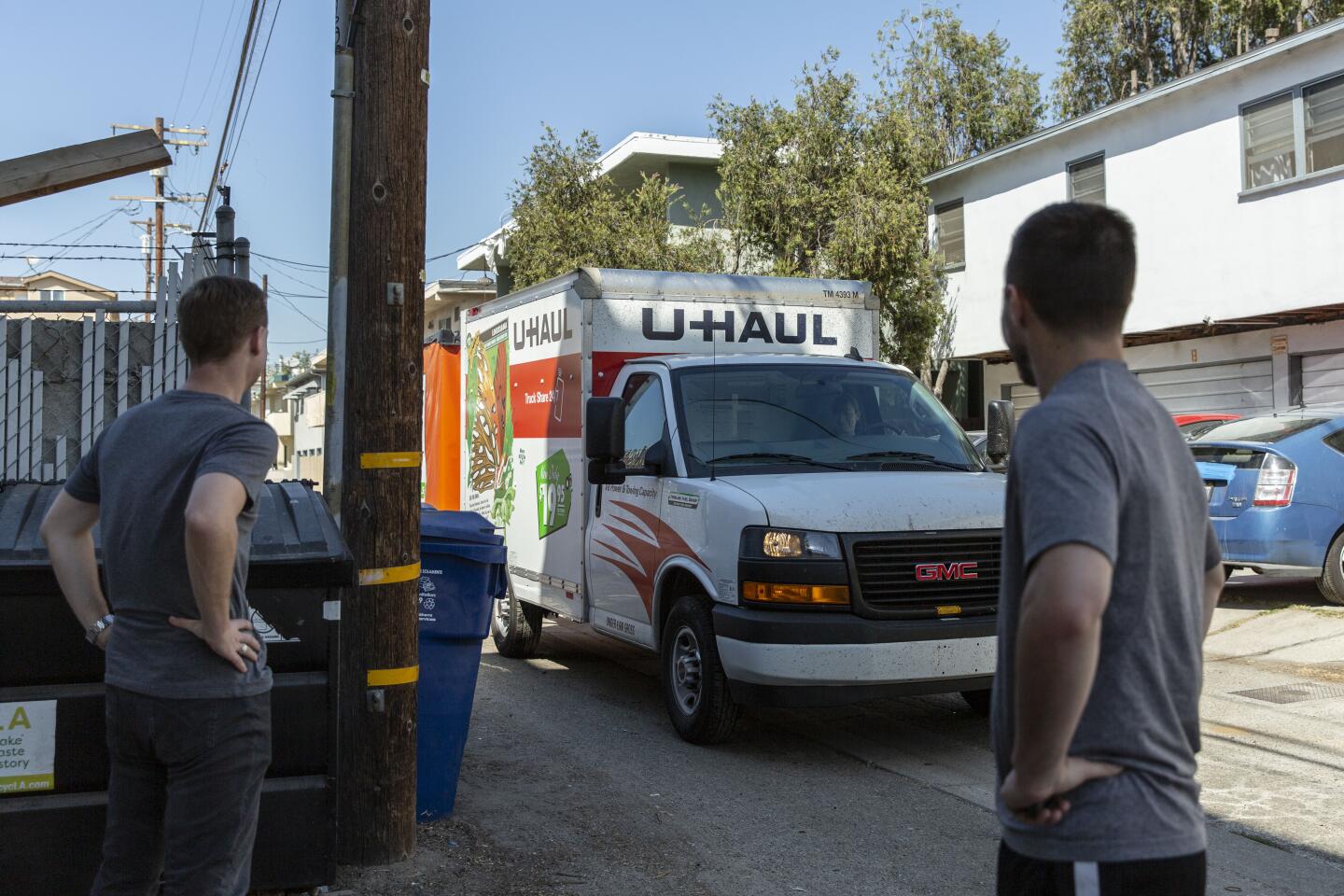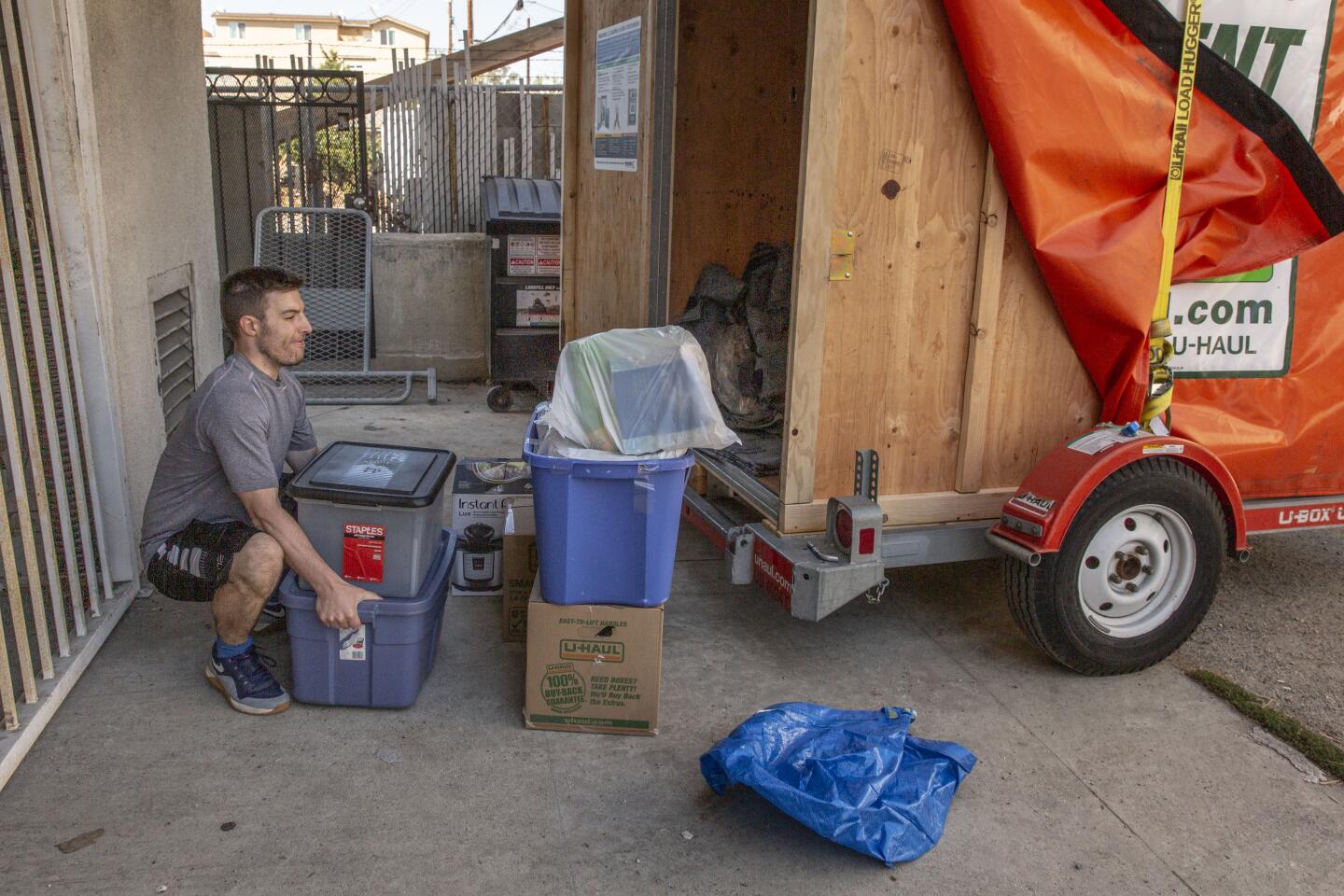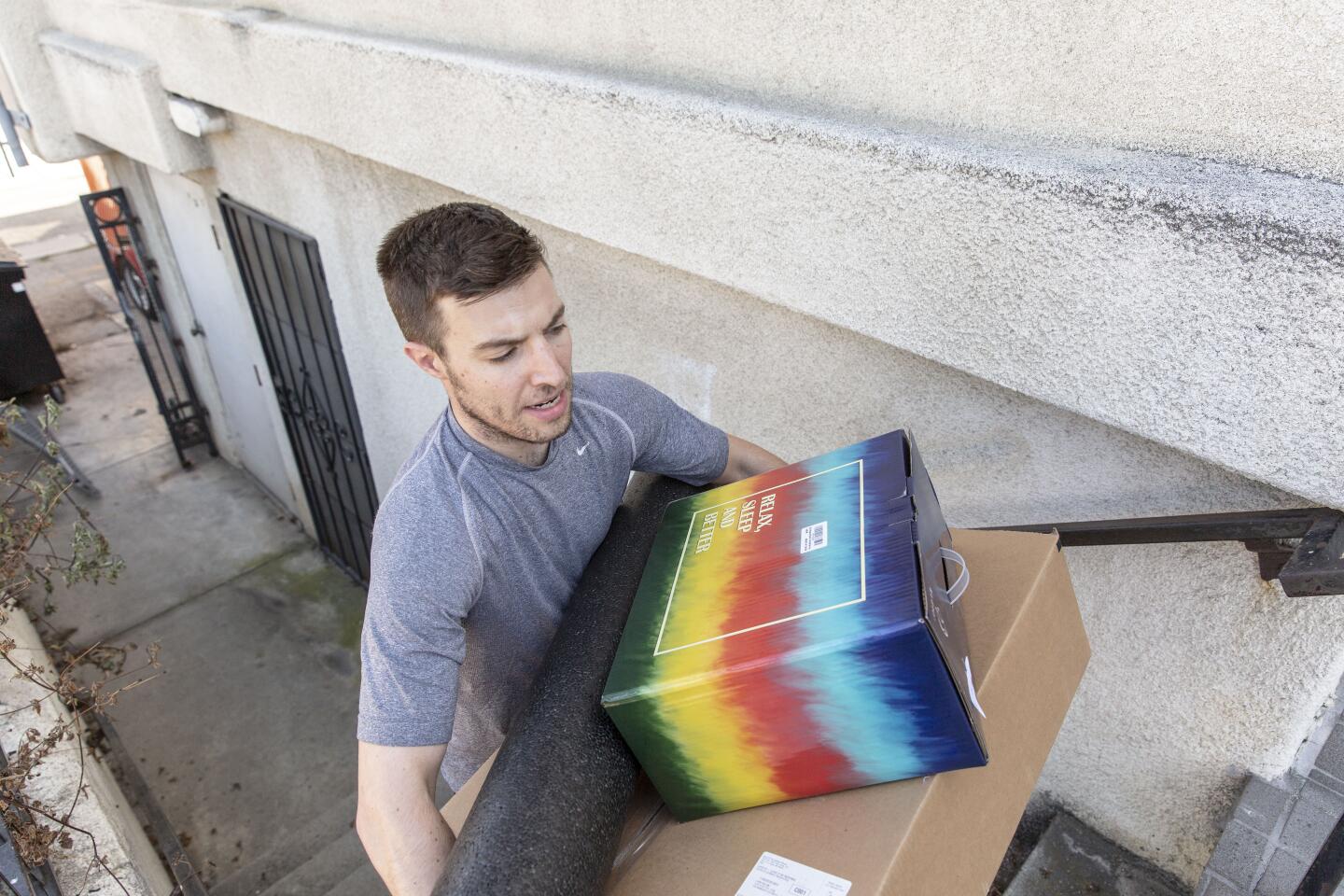I’ve covered California’s housing crisis for years. Living it is a different story
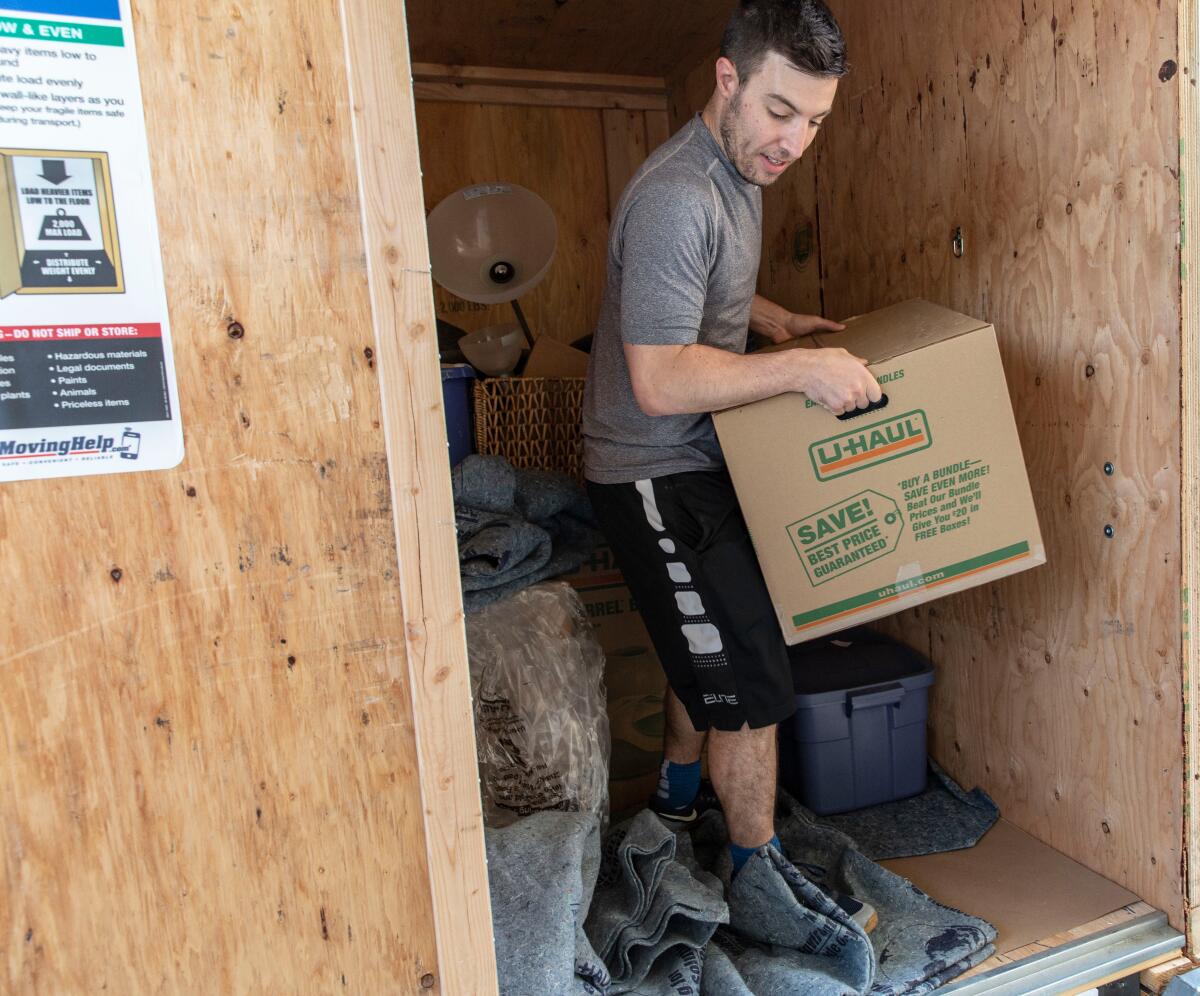
My move from Sacramento to Los Angeles began with acceptance. My rent was going to go up — and it was going to go up a lot.
For close to four years, I’ve been writing for The Times about California’s housing affordability problems. I’ve worked in the paper’s bureau in Sacramento, focusing on government’s response to rising home prices, rents and homelessness. I’ve chased lawmakers in a six-block radius around the state Capitol, and kept a close eye on the eye-popping stats about the cost of living.
But I’ve never lived it. Until now.
In October, I accepted a new assignment to write about housing affordability from a community rather than a government perspective — a change that required moving to Los Angeles.

Even though I understood what it meant to move to one of the most expensive regions in the country, I hadn’t yet felt what it was like to navigate a maze of rent control laws, choose between extra space or extra miles for a commute, or decide which landlord to trust in a market with just about everything in their favor.
Thousands of people do this every year, many of them with a lot fewer advantages than I’ve had. To be sure, while journalism isn’t a lucrative profession, I could be certain that I was not going to join the 1.7 million renter households in California that spend half their income on housing. Or the many people I’ve interviewed who have taken shelter in unsafe warehouses or been pushed to the brink after seeing their rents double or even triple overnight. There’s tremendous security and privilege in that.
But unless I decided to live more than an hour from my office at The Times’ headquarters in El Segundo or squeeze into a couple hundred square feet — a frequent calculation for those moving to L.A. — I also knew much more of my pay was going to get sucked away every month. It left me with an anxiousness that I’ve heard many Californians explain, but had yet to confront myself.
That realization manifested itself as a sinking stomachache while talking with my L.A. friends about how much I should budget for a one-bedroom apartment.

“I’m thinking I could try to find something for around $2,000,” I said over beers and pizza one night.
“Huh?” they responded. “You’re probably going to spend closer to $2,500.” That’s more than double what I was paying.
In recent years, more people have made the opposite move, going from Los Angeles to Sacramento. From 2010 to 2016, 64,000 Angeleno households headed to the state capital region, a figure nearly 50% higher than those who went from Sacramento to Los Angeles, according to an analysis of U.S. Census data by UC Berkeley’s Terner Center for Housing Innovation. About half of those fleeing L.A. earned less than $50,000 a year, a sign those families are looking for more affordable living.
And yet an influx of residents, predominantly from the more expensive Bay Area, is making it more expensive to live in Sacramento, too. In 2017, rents in the city grew 7.5%, the fastest of 40 top U.S. cities, according to real estate firm Apartment List.
That year, my rent went up $100 a month — or 9.7% — to $1,145 for my one-bedroom in an older, 20-unit complex in Sacramento’s gentrified Midtown neighborhood. The increase was so much at one time that it would likely now be prohibited under the state’s new cap on large rent hikes. When I saw the notice on my door, I grabbed it and almost comically balled it up in my fist in indignation. But acceptance won the day back then, too. I knew I’d never find anything I’d wanted at a lower price that was similarly a 15-minute, tree-lined walk to work.
I started my Los Angeles apartment search six weeks before my Oct. 1 move with a basic outline. I wanted what I imagine many people in L.A. want: a one-bedroom that was a moderate drive from work, had some places to eat and shop nearby and wasn’t too far from downtown. I quickly focused on Culver City and the neighboring Palms neighborhood in L.A. — two hot Westside communities for young professionals.
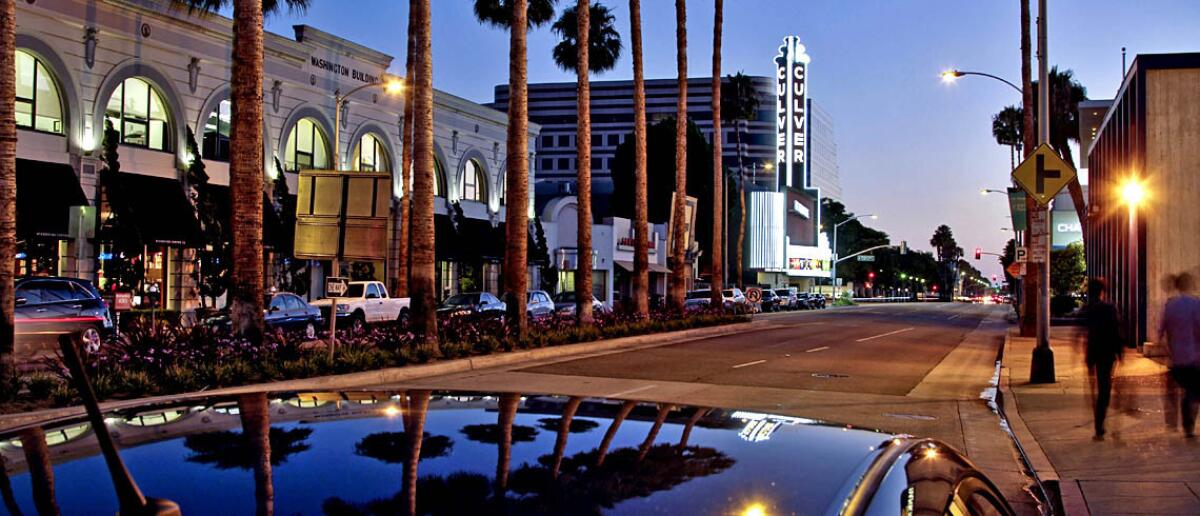
I typed Culver City into an apartment listing website and found just four one-bedrooms for less than the $2,500 a month my friends told me I was going to have to pay. So Palms it was. I decided to bury my anxiousness about my soon-to-balloon rent in a spreadsheet.
My spreadsheet had seven columns to track the cost and size and some of my preferences for potential apartments, such as miles from work and minutes on foot to the Expo Line. I also included a box for rent control. Because Palms is in the city of Los Angeles, rent increases in older buildings are limited to about 3% or 4% every year, I learned. After writing many horror stories about exorbitant rent hikes, I wanted to know if my apartment would come with the security of these limits.
I set aside a Friday and Saturday to look at a dozen listings. On the second day I’d be joined by my longtime partner who is planning to move in when she can transfer to an office in Los Angeles.
I knew I wasn’t going to find a place as walkable as my neighborhood in Sacramento, but the alienation set in immediately. My first appointment was at a large complex closed off from the road with apartments hidden in warrens of hallways. The wide streets, little shade and long yellow lights made traveling on foot feel hostile. Even the apartment I saw a block from the Expo line had no easy way to access it, probably because the stop sits next to the 10 Freeway.
I also was surprised when I went into the apartments. The places I visited cost far more than what I was paying in Sacramento — between $1,850 and $2,450 a month — but nearly all of them were worse. The newer apartments were tiny and the older ones were dingy.
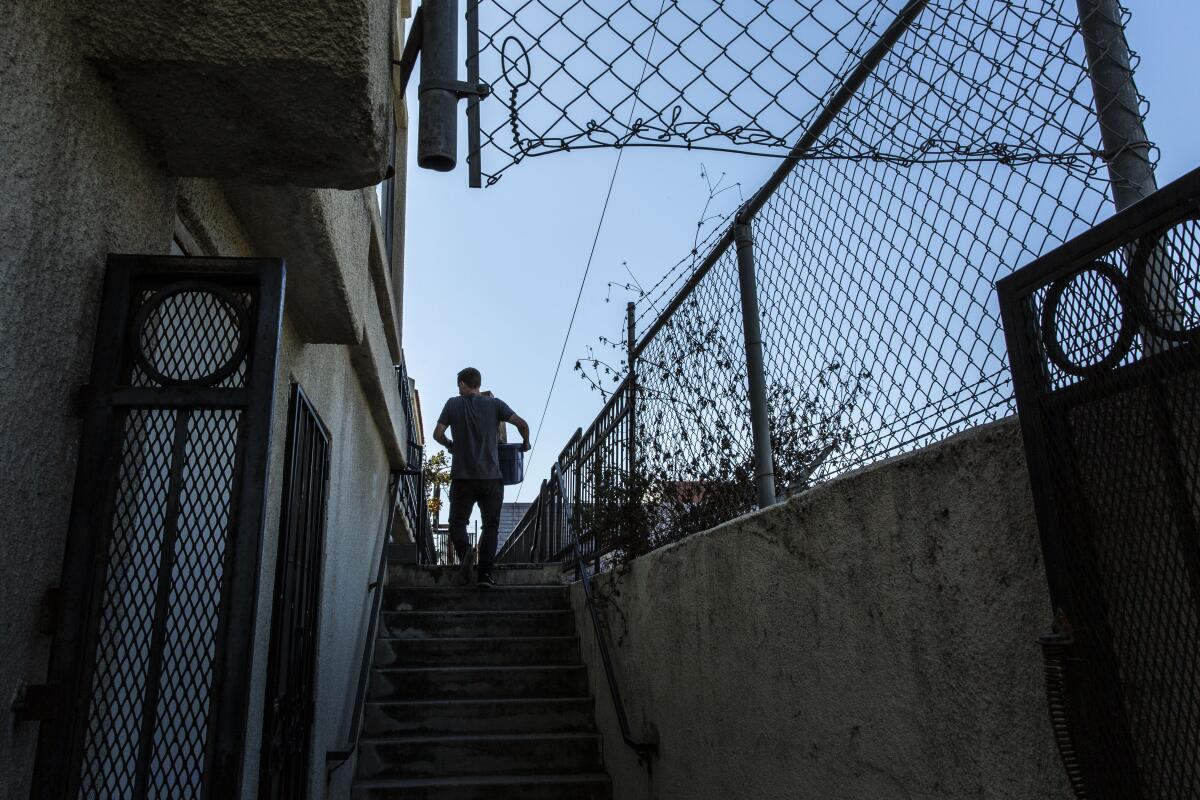
These are the hard lessons of moving to Los Angeles from a less expensive place. I shudder to think what the experience would feel like in the Bay Area, where the median one-bedroom listing in San Francisco is $3,650, nearly 50% higher than L.A. It’s no wonder that so many young adults feel that they have no choice but to leave California to afford a better quality of life.
There was one moment of levity in my search: I noticed every apartment I saw had wood laminate floors, with colors ranging from the lightness of faux ash to the richness of faux mahogany. It was as if someone sent out a memo to Westside landlords about what millennials like. As an old millennial, I will admit that I liked them.
Still, nothing was clicking. One place had a cool layout that neatly divided the apartment into two levels, but it didn’t have a dishwasher. Another had a pool, but the building manager, a kind older woman who had been living in one of the rent-controlled units for years, told me the best way to keep the apartment warm when it got chilly was to bake cookies in the oven.
By late Saturday afternoon, we had one apartment left to visit. As soon as we walked in, it felt like home. It’s on a busy street but not a boulevard. The walk to the Expo Line is 10 minutes and it’s less than nine miles north of the office. It’s 900 square feet, huge for a one-bedroom, with a walk-in closet. There’s even a gas fireplace I had no idea I wanted until I saw it. My partner loved the place.
The cost, $2,270 a month, was on the high side of what I had seen, but it wasn’t the most expensive one on my list. And the complex was built in 1989, meaning that it was too new to be rent controlled. I would have to abandon that protection.
A couple hours after seeing the place, I sat on a hotel bed in El Segundo, and the anxiousness I had felt about the move turned to dread. In an extremely rookie move, I had forgotten my checkbook in Sacramento and realized I had to wait to put down a deposit. I worried that if I didn’t act fast enough, I was going to lose the apartment.
Then I started to come to grips with what I was actually doing: My rent was going to double.
It worked out. I moved in the last weekend of September. My daily commute is just 20 minutes. I ate the best Indian food I’ve ever had three blocks from my place on Venice Boulevard. When my second rent payment left my checking account, my heart quickened and I felt awash in worry. But soon I realized — and again had to accept — that, in California, this is the cost of living and the cost of what I wanted.
More to Read
Sign up for Essential California
The most important California stories and recommendations in your inbox every morning.
You may occasionally receive promotional content from the Los Angeles Times.

